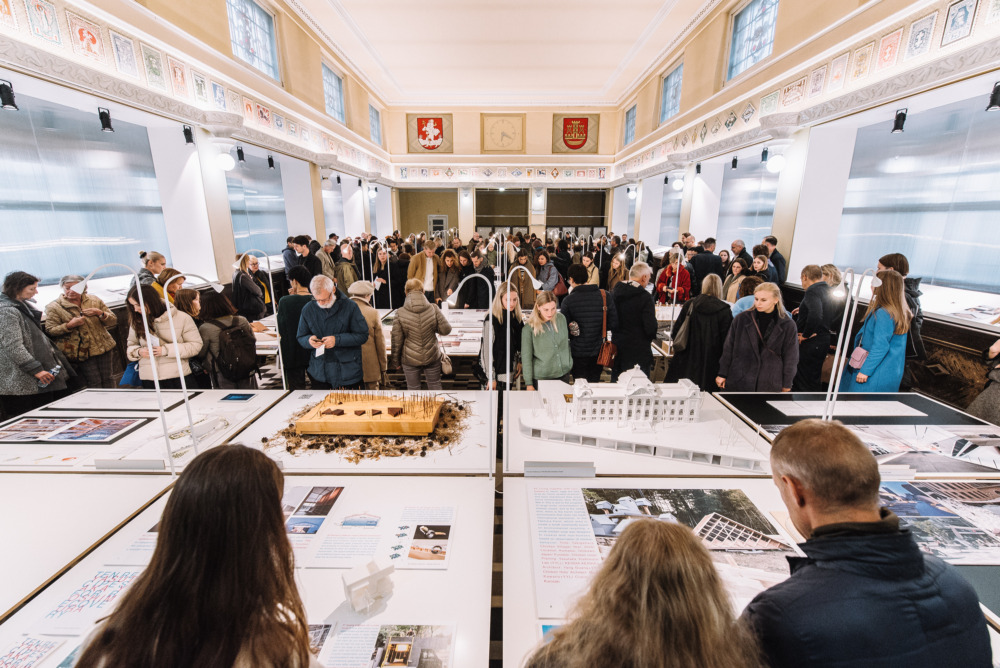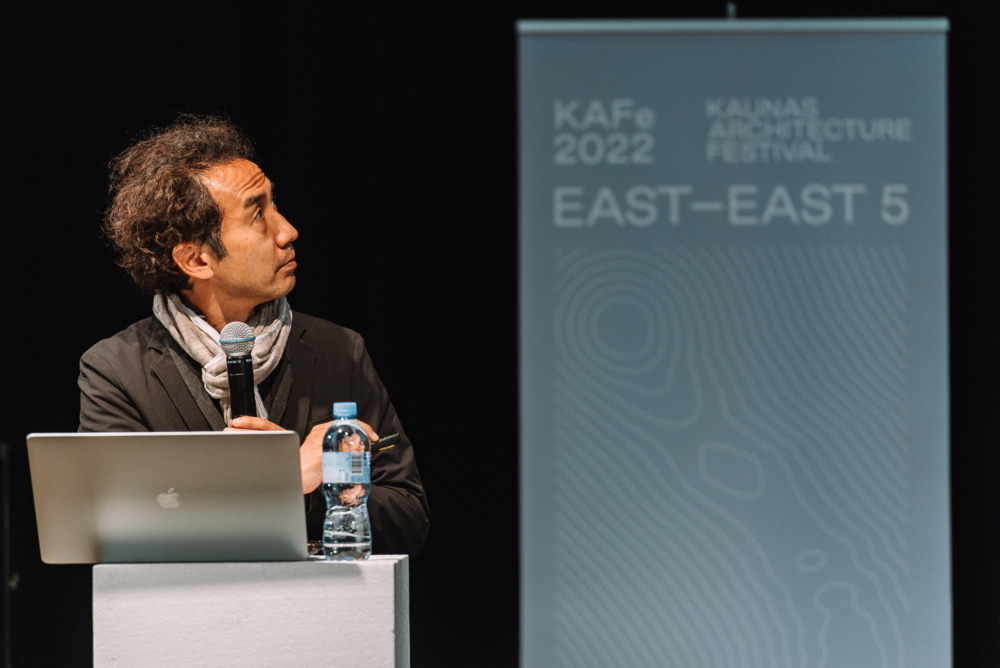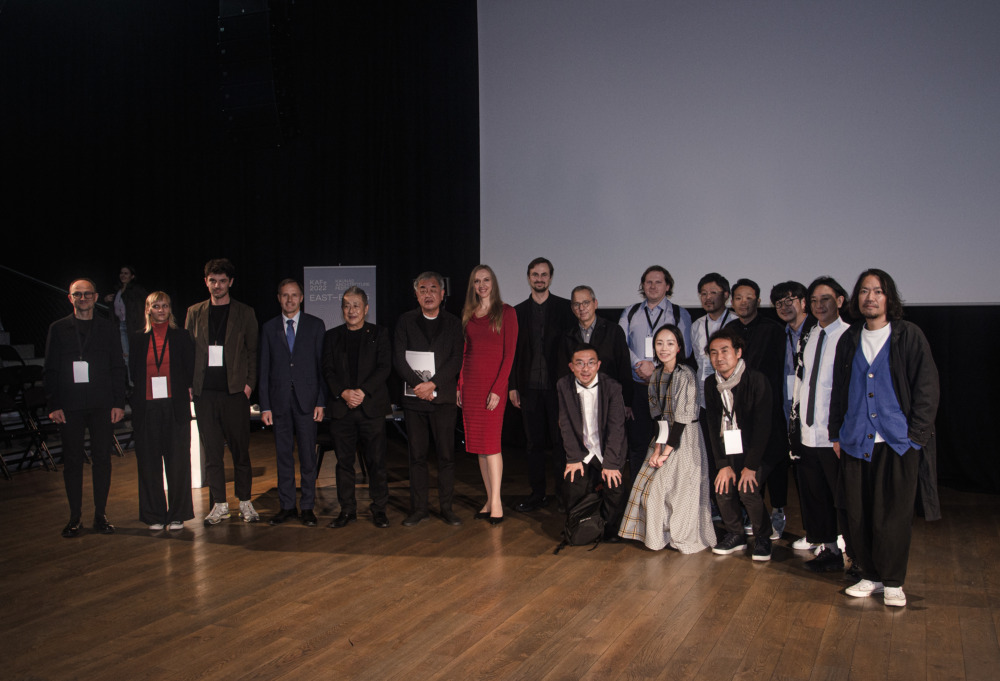Column
ColumnTime for recovery
The fourth Kaunas Architecture Festival KAFe2022 started on 23 September with the theme “Recovery”
Today, the subject of architecture is becoming exceptionally important. Human activity has so profoundly altered the environment around us that technological innovation, the pace of industrial development, urban sprawl and population density are distorting the course of sustainable living and depleting the potential of the Earth’s natural resources.

We should reconsider and refresh the ideas we live with today and into the future. It is time for recovery. It is now essential to only pursue high-quality architectural projects, lean and thoughtful urban development, where nature and its forms of expression become the priority of the creative and operational process.
The first Kaunas Architecture Festival KAFe 2013 addressed the timely topic of the central city’s relationship with rivers, “The city and its waterfronts”. The two-month event caused amazement among architectural professionals and residents that such a high-level professional event could take place in Kaunas. KAF2016 “Restart your city centre” explored the issues of recovery and renewal of city centres, while the theme of KAFe2019 “Landmark Architecture – creating or destroying a city’s identity?” looked at the impact of new buildings on the established urban fabric.
Through our activities and numerous events at KAFe, we have persistently argued the necessity of architecture for the city and its community. The festivals have produced and presented more than 100 exhibitions, forums, talks, student workshops, architectural excursions and unconventional architectural events in a variety of formats; more than twenty magazines, catalogues and books have been published. This has been appreciated and recognised by the architectural community and beyond.
In 2022, we are focusing on professional cooperation between different countries and cultures. KAFe2022 coincided with the very important event “Kaunas – European Capital of Culture 2022” and became an official part of the programme of this prestigious event.
While planning the programme of the event, I thought it would be a great opportunity to involve the architectural community again in a joint Lithuanian – Japanese architecture project. Two countries with different histories and cultural traditions – Japan, with 125 million inhabitants in the East of the World, and Lithuania, with almost 3 million people in the East of Europe – are now celebrating 20 years of architectural cooperation. The project involves the most creative Lithuanian and Japanese architects and architecture students of all ages.
The “East-East” architectural project, which is open to the public, has laid the foundations for exchanges and professional fellowship between Lithuanian and Japanese architects – it includes lectures, exhibitions, discussions, and workshops for students. Lithuania is the only country in the European Union with such a high level of long-term cooperation with Japan in the field of architecture. “East-East 5” perfectly reflects the international dimension of the Kaunas Architecture Festival and the idea of commemorating the 100th anniversary of bilateral relations between Lithuania and Japan.

It is therefore no coincidence that the architecture Forum of the KAFe2022 Lithuanian-Japanese event “East-East 5” feature the main theme “Recovery”, the exhibition theme “Recipe for Recovery” and the students’ workshop theme “A playground for Recovery”.
It is especially gratifying that this idea was supported and developed by the Japan Institute of Architects in Tokyo, the Architects Association of Lithuania and its Kaunas branch. The mediator was the initiator of the “East-East” project, diplomat Dainius Kamaitis, former Ambassador of the Republic of Lithuania to Japan (2006-2011). Financial support was provided by the “Kaunas – European Capital of Culture 2022” organising office, the Lithuanian Council for Culture and the EU-Japan Fest Committee. Organisational support was provided by the event partner Kaunas University of Technology. Without the support of these organisations and the efforts of a whole group of programme leaders, curators and coordinators from Lithuania – Paulius Vaitiekūnas, Martynas Marozas, Jautra Bernotaitė, Andrius Ropolas, Laura Baltkojytė and from Japan – George Kunihiro, Osamu Nishida, Shinichi Kawakatsu, Kei Kaiho, Yumi Zoraku, and many others, we would not have been able to organise and realise such a large-scale event. I am sincerely grateful to all of them.

I am sure that this event will give a new impetus to the cooperation of the younger generation of architects, and through the concerted efforts of Japanese and Lithuanian architects, we will contribute to the search for ideas for renewal and ways to address them.
At all times, the profession of Architect has been inseparable from ideas towards the future and closely linked to responsibility – to the place, to the client, to the community. It is not about the size of the projects we build, it is about the message and the idea we convey to society and the environment. It is therefore imperative for us as architects to understand the needs of tomorrow’s society and to meet them in a way that preserves that mystical Genius Loci of the place, which, if lost, transforms the environment into a “no man’s land”.








